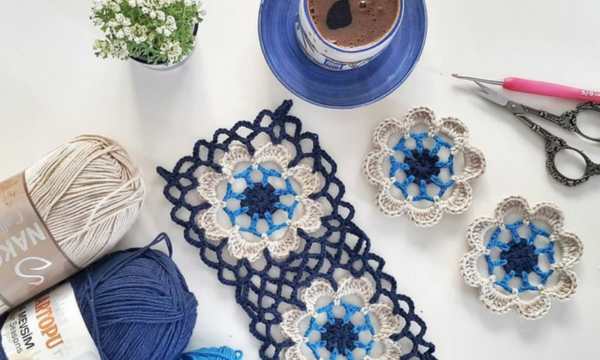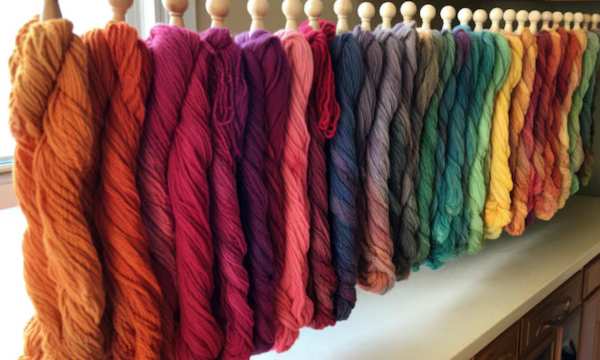Decorating with thread is a creative and flexible way to add depth, texture, and visual interest to various textile projects.
Ad
No matter how experienced a crafter you are, learning how to add embellishments with wire can take your projects to a whole new level. This guide will show you several ways to improve your thread embellishment skills, from simple stitches to more complex stitches.
1. Tools and Materials Required:
Before you start decorating the moldings, make sure you have all the necessary tools and materials. Threads in different colors and textures, embroidery needles, embroidery hoops, and fabric are some of the most basic things you will need. Choosing the right combination of materials is important to get the desired results from your project.
Ad
2. Simple Embroidery Stitches:
Thread embroidery starts with learning and becoming good at basic embroidery stitches. You can use stitches like running stitch, flat stitch, and satin stitch to shape your designs, fill in space, and make them look more interesting. You can use these basic stitches as building blocks for more advanced stitches.
3. Seed Stitches and French Knots:
You can use French knots and moss stitches to add small, textured details to your embellishments. Try changing the tension and gauge of the wire and see what happens. You can use these stitches to add depth to the petals, create intricate patterns, or decorate the surface of the fabric.
Ad
4. Coaching:
Finishing a sofa is the process of attaching a thread to a surface with another thread to create patterns and textures that look good. You can use this method to add metal wire, yarn, or other specialty yarn to your project. The bench will make your design look better, and if you try different thread combinations you will get different results.
5. Draw with Lines:
Thread painting is a method that uses embroidery thread to make the strokes resemble real paint. Understanding how to do this will help you create images on fabric that look realistic and detailed. To add depth and shading to your thread drawing designs, you can mix different thread colors and add multiple stitches on top of each other.
6. Bead Embroidery:
Adding beads to your threads will make them sparkle and give them more depth. Learn how to attach beads using different stitches, such as the backstitch and the lazy daisy stitch. Vary the size, color, and position of the beads so that patterns and textures stand out.
7. Sew the Ribbon:
You can make wire embellishments more interesting by adding ribbons to the design. Ribbon embroidery is a method of creating three-dimensional floral patterns and intricate patterns using ribbons of different widths and textures. Learning this technique can give your textile projects a soft, elegant look.
8. More Advanced Stitches and Methods:
If you want to challenge yourself, try more difficult stitches such as bullion knots, flying stitches, and guipure embroidery. These stitches add beautiful detail and texture that will make your thread embellishments look more elegant. Try combining several advanced stitches to create designs that are both unique and difficult.
9. Mixed Media Decoration:
To create a mixed media project, add wire embellishments to other types of artwork. Do some tests by adding paint, dye, and other embellishments to your threadwork to make it look more interesting and beautiful. By combining different textures and techniques, a truly unique and personal work of art can be created.
10. Try New Things and Make Things Unique:
Trying and making it yourself is the best way to get good at wire embellishment. Don’t be afraid to try new stitches, mix different types of yarn, or change up an old method to suit your style. As you get better at what you do and become more confident, come up with unique ways to add wire embellishments to your projects.
Conclusion
Learning how to use wire embellishing techniques opens up many creative possibilities in textile art. Whether you use thread to embellish clothing, make home decor, or create your art, you can use basic stitch techniques, advanced techniques, and experimentation to showcase your artistic vision. Now it’s time to learn how to decorate with thread. Get your needle, thread, and fabric ready.
FAQs
1. What are the main tools and materials for line trimming?
An embroidery needle, an embroidery hoop, and threads in different colors and textures are the most basic tools. You also need fabric as a canvas. If you want your project to be the way you want it to be, it is important to choose the right combination of materials.
2. Why are simple embroidery stitches important if you want to add some style to your thread?
For more advanced techniques, you’ll need to know how to make simple stitches such as the backstitch, flat stitch, and satin stitch. Learning these stitches will help you draw lines, fill in space, and add texture to your designs.
3. How do French knots and moss stitches make threadwork look better?
You can use French knots and moss stitches to add small, textured details to your projects. You can use them to add depth to petals, create intricate patterns, and add different textures to the surface of the fabric.
4. What is a sofa and how does it contribute to the beauty of a line decor?
Finishing a sofa is the process of attaching a thread to a surface with another thread to create patterns and textures that look good. This method is ideal for adding metallic wire, yarn, or specialty thread to your projects to make them look better.
5. What is line drawing and how do you use it to decorate lines?
The use of embroidery thread to create picturesque strokes is called thread painting. You can create realistic, detailed images on fabric by mixing thread colors and adding stitches on top of each other to create the impression of depth and shadow.
6. What are the ways to decorate wire with beads?
Beads can be added using different stitches, such as the running stitch and the lazy chrysanthemum stitch. By adjusting the size, color, and placement of the beads, wire embellishments can take on interesting patterns and textures.


